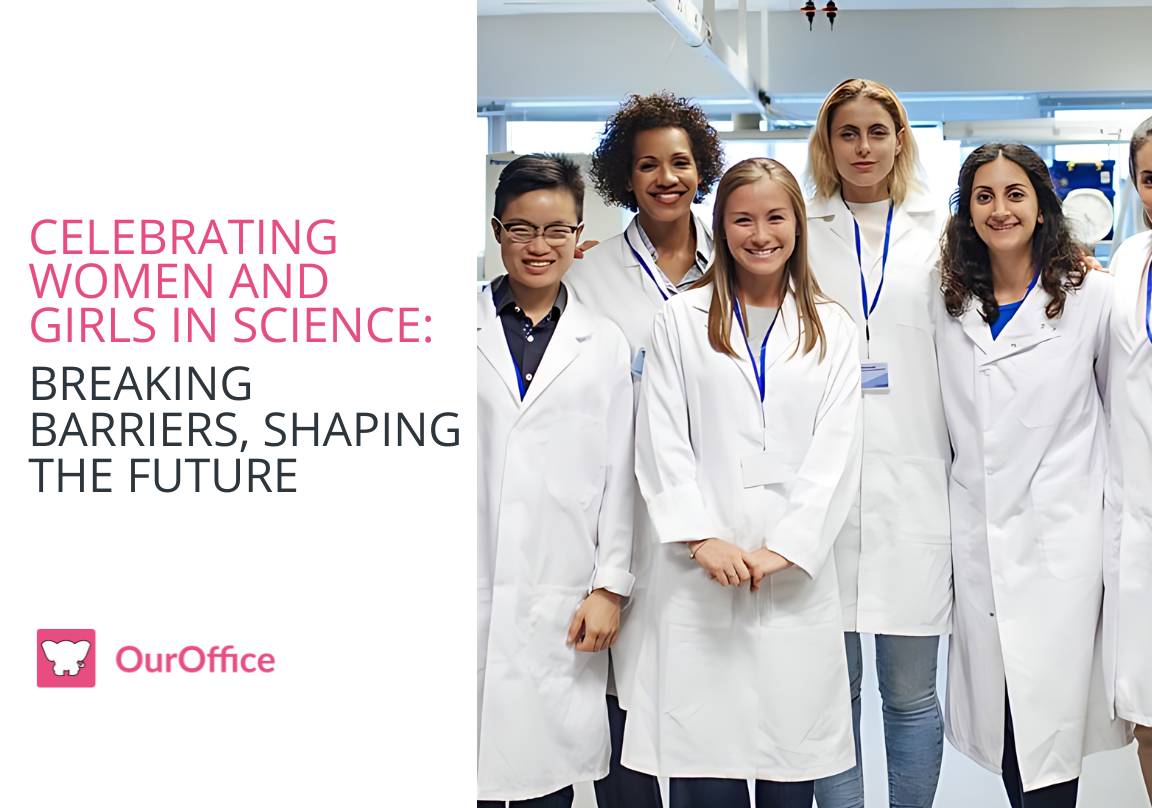19 Feb Celebrating Women and Girls in Science: Breaking Barriers, Shaping the Future

Every February 11th, the world comes together to honor and celebrate the International Day of Women and Girls in Science. It's a day that recognizes the remarkable contributions of women and girls to the fields of science, technology, engineering, and mathematics (STEM), while also highlighting the challenges they face and advocating for gender equality in these fields.
Events like the International Day of Women and Girls in Science play a crucial role in empowering women and girls to pursue careers in STEM. By showcasing the achievements of female scientists and highlighting the opportunities available to them, we can inspire the next generation of innovators and problem-solvers. Moreover, initiatives aimed at providing mentorship, scholarships, and support networks can help women and girls overcome the obstacles they may encounter on their journey in STEM.
On this day, it's essential to celebrate the successes of women and girls in science and recognize the trailblazers who have paved the way for future generations. From Marie Curie, the first woman to win a Nobel Prize, to contemporary figures like Dr. Frances Arnold, the fifth woman to receive the Nobel Prize in Chemistry, there are countless inspiring role models for aspiring female scientists to look up to.
Diversity in science is not just a matter of equity; it's essential for scientific progress and innovation. When people from different backgrounds, experiences, and perspectives come together to tackle complex problems, the results are often groundbreaking. Unfortunately, women and girls have historically been underrepresented in STEM fields, facing barriers such as stereotypes, lack of access to education and resources, and discrimination in the workplace.
Impacts on the Workplace

While progress has been made in recent years to increase gender diversity in STEM, there is still much work to be done. Women and girls continue to face barriers to entry and advancement in these fields, and systemic issues such as unconscious bias and workplace discrimination persist. However, by working together to address these challenges and create more inclusive environments, we can unlock the full potential of all individuals in STEM.
Research on women and girls in STEM from the American Association of University Women (AAWU) found that:
Mentoring in the workplace will also impact your people’s personal development, can positively support mental health, and improve employee retention.
- Many girls lose confidence in math by the third grade. Boys, on the other hand, are more likely to say they are strong in math by 2nd grade, before any performance differences are evident.
- Girls score higher than boys in math in lower-income, predominantly Black areas (representing around one-quarter of school districts), but their scores are still disproportionately low compared to scores for white boys in high-income areas.
- By the time students reach college, women are significantly underrepresented in STEM majors — for instance, only around 21% of engineering majors are women and only around 19% of computer and information science majors are women.
- Nearly 80% of the healthcare workforce are women, but only about 21% of health executives and board members are women and only about a third of doctors. Furthermore, women are more highly represented in lower-paying fields, such as home health workers, nurses and lower-paying specialties such as pediatricians.
- Only 38% of women who major in computers work in computer fields, and only 24% of those who majored in engineering work in the engineering field.
- Men in STEM annual salaries are nearly $15,000 higher per year than women ($85,000 compared to $60,828). Latina and Black women in STEM earn around $33,000 less (at an average of around $52,000 a year).
- Although women make up 48% of the US workforce and earn half of the bachelor’s degrees in STEM, they only represent 27% of STEM workers.
- Nearly 14% of the US population identifies as Black and they represent 11% of the overall workforce in the country, but only 9% of STEM workers. As for people who identify as Hispanic, they make up 16% of the workforce, but only 7% of all STEM workers.
Actions Organizations Can Take to Support Women and Girls in Science
Supporting women and girls in science requires a concerted effort by employers to create inclusive environments where they can thrive. Here are some actions organizations can take to support women and girls in science:

Promote Diversity, Equity and Inclusion Initiatives: Develop and implement DEI policies that prioritize gender equity in hiring, promotions, and leadership positions. Ensure that these initiatives are visible and actively supported by top management.
Provide Equal Opportunities for Career Advancement:Ensure that women have access to the same opportunities for career advancement, mentorship, and professional development as their male counterparts. Implement programs to support women in seeking leadership roles within the organization.
Offer Flexible Work Arrangements: Provide flexible work arrangements, such as telecommuting, flexible hours, and parental leave policies, to accommodate the needs of women who may have caregiving responsibilities. This allows them to balance work and family commitments more effectively.
Invest in STEM Education and Training: Offer training and educational programs specifically targeted at women and girls to encourage their interest and participation in STEM fields. Provide resources and support for women pursuing degrees or certifications in science-related disciplines.
Establish Mentorship and Networking Opportunities: Create formal mentorship programs where experienced women in the organization can provide guidance and support to younger women entering STEM fields. Encourage networking opportunities both within the organization and through external events and conferences.
Combat Gender Bias and Stereotypes:Provide training to raise awareness of unconscious biases and stereotypes that may affect women in the workplace. Encourage open dialogue and foster a culture of respect and inclusivity where all employees feel valued and respected for their contributions.
Ensure Equal Pay and Benefits: Conduct regular audits to ensure that women are paid fairly and receive equal benefits compared to their male counterparts. Address any disparities found and take proactive steps to close the gender pay gap within the organization.
Support Work-Life Balance: Offer support services such as onsite childcare facilities, lactation rooms, and wellness programs to help women balance their work and personal lives effectively. Recognize the importance of promoting employee well-being and create a supportive work environment.
Celebrate Achievements and Role Models: Recognize and celebrate the achievements of women in science within the organization. Highlight their contributions through awards, public recognition, and speaking opportunities to inspire others and showcase the diverse talent within the workforce.
Participate in External Initiatives: Engage with external organizations and initiatives focused on supporting women and girls in STEM, such as participating in mentorship programs, sponsoring events, and collaborating on research projects. By working together with the broader community, workplaces can amplify their impact and contribute to positive change on a larger scale.
The International Day of Women and Girls in Science is a time to celebrate the achievements of women and girls in STEM and to reaffirm our commitment to achieving gender equality in these fields. By working together to break down barriers and create more inclusive environments, we can ensure that all individuals have the opportunity to pursue their passion for science and contribute to a brighter, more innovative future for us all.
For more questions or comments and to discuss DE&I in your workplace, please do not hesitate to contact your DE&I Advisor or DEI@ouroffice.io. Our team is here to support you in any way we can.




